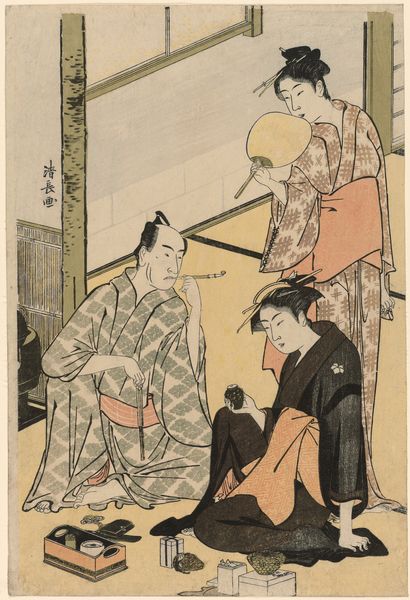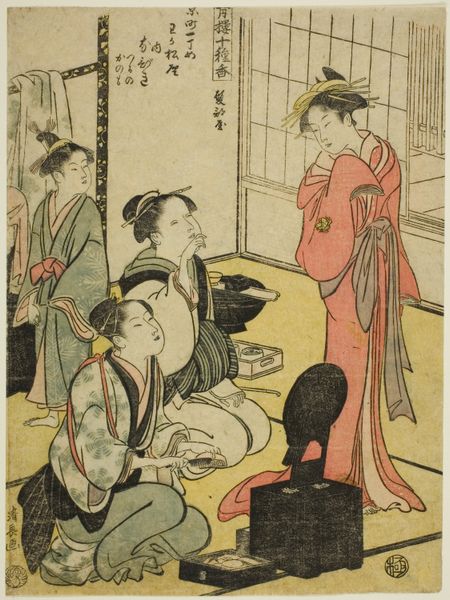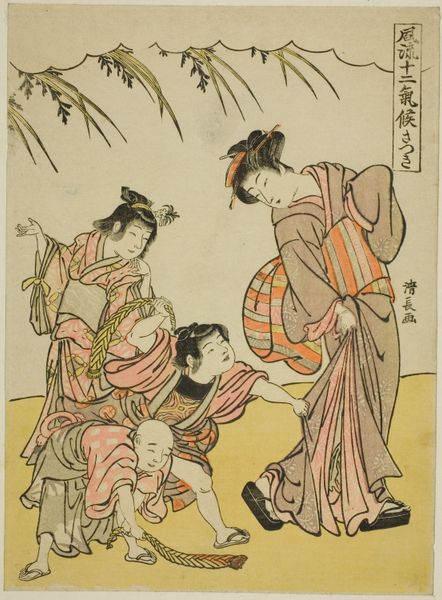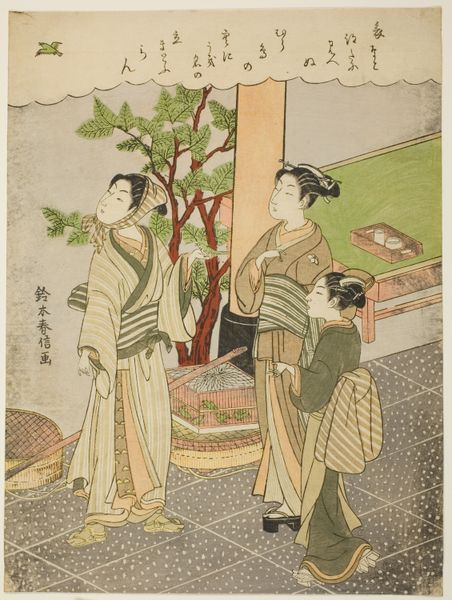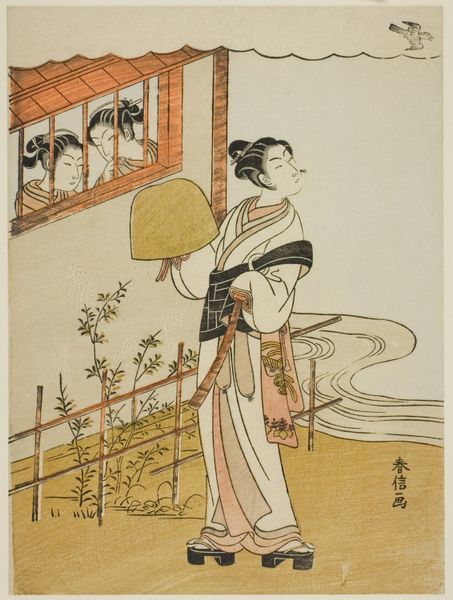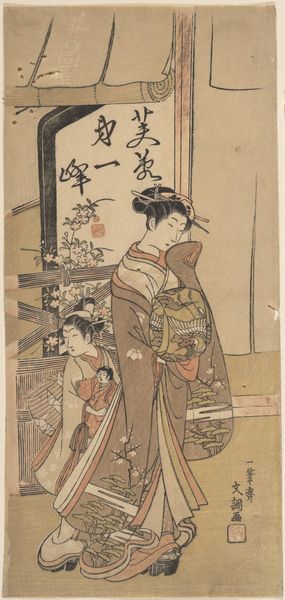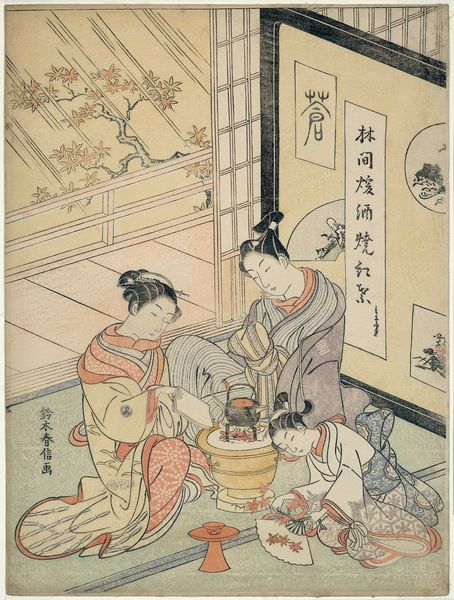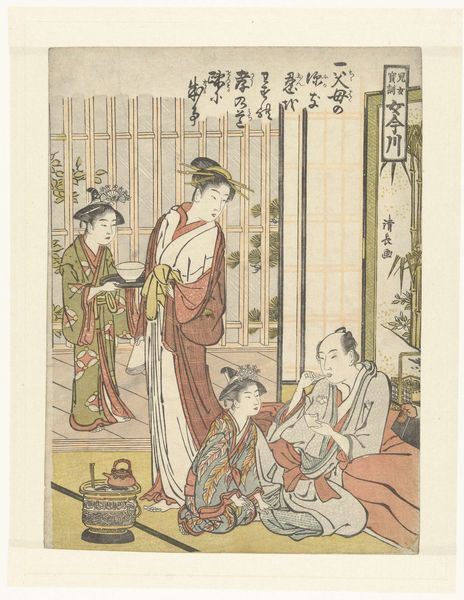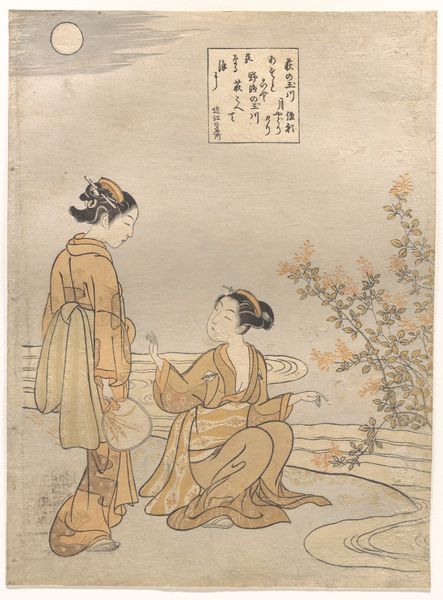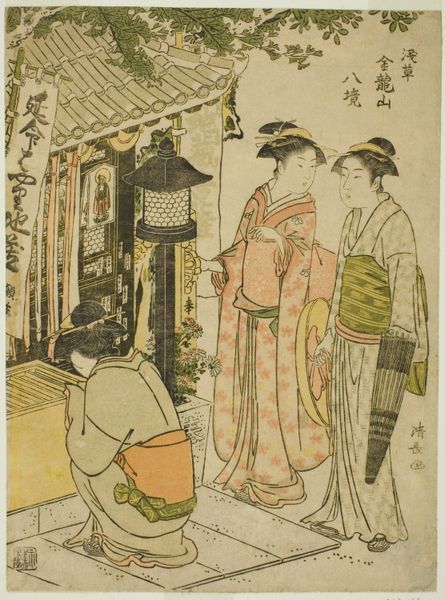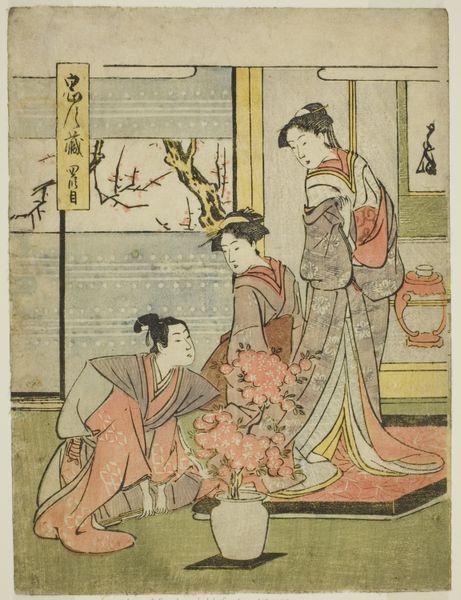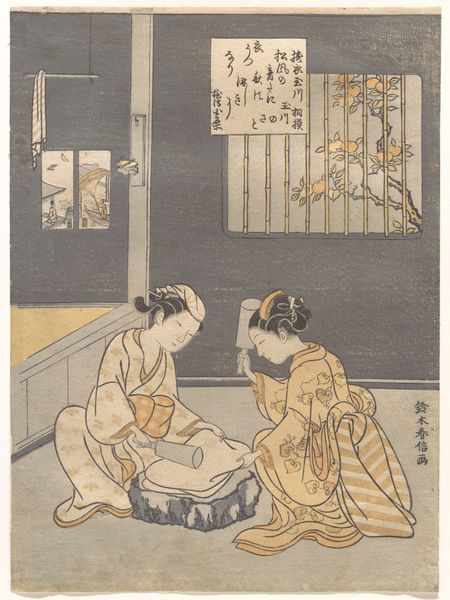
print, woodblock-print
landscape
ukiyo-e
figuration
woodblock-print
genre-painting
watercolor
Dimensions: height 286 mm, width 216 mm
Copyright: Rijks Museum: Open Domain
Curator: Shiba Kōkan’s “Courtesan watching her maids roll a snowball,” made around 1770, immediately gives me a chilly, wistful feeling. Editor: That's interesting. The first thing I noticed was the sheer amount of material and labor it took to produce these woodblock prints. I imagine the carving process alone was intensive. Curator: It was indeed a highly developed craft, with different artisans often specializing in carving, printing, and even designing the keyblock. What draws me in, though, are the courtesan’s elaborate robes and the way she watches her maids. To me, the snowball almost serves as a vanitas symbol – a reminder of the fleeting nature of time and beauty. Editor: Right, the fleeting beauty, literally taking shape from ice that will soon melt. Yet it speaks volumes about the status of leisure afforded by a rigid class structure. Notice the texture printed for the kimonos too – that requires skill. Curator: Absolutely, that delicate texture on their clothing certainly enriches the viewing experience. There’s also something powerful in the act of elevating what might seem like a common, seasonal activity—building a snowman—into a moment worthy of artistic capture. What do you make of the composition, the landscape, and fence that make up a major section of the print? Editor: Visually, that dark textured fence creates a framing of status that I keep circling back to. I find myself asking questions about consumption, the art market, and accessibility in Japan at this moment. Curator: I agree about accessibility. Genre paintings were extremely popular then. Everyday folk, elite members, all consuming it, internalizing the values within them... values that shifted slowly through imagery, the clothes, objects. We carry memory in imagery. Editor: Indeed. Considering this work and its place within the printmaking context deepens my understanding not just of the visual, but of the systems and circumstances behind its creation. Curator: And I leave feeling melancholy, the soft pallid colors and fleeting imagery making me consider how the transient informs permanence. Editor: Yes, both its making and meaning resonate powerfully across time through that careful use of material.
Comments
No comments
Be the first to comment and join the conversation on the ultimate creative platform.

